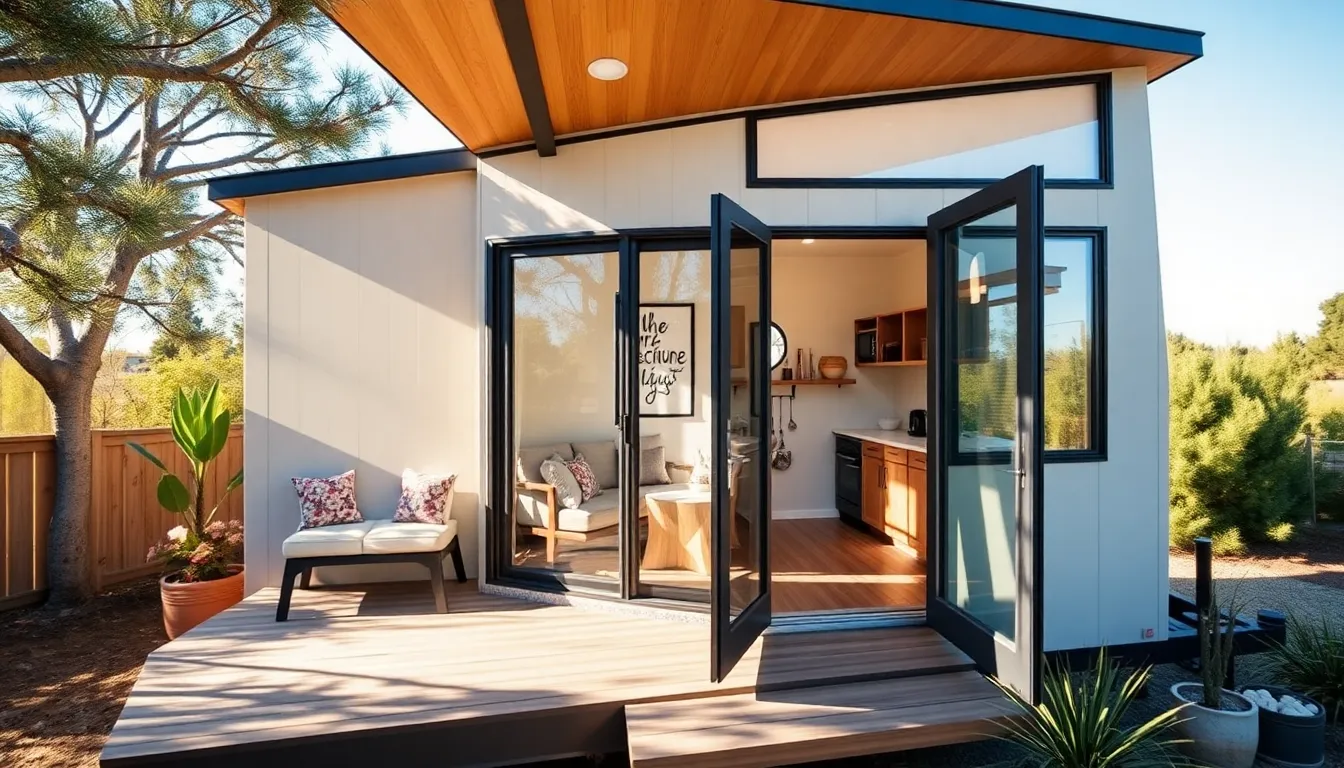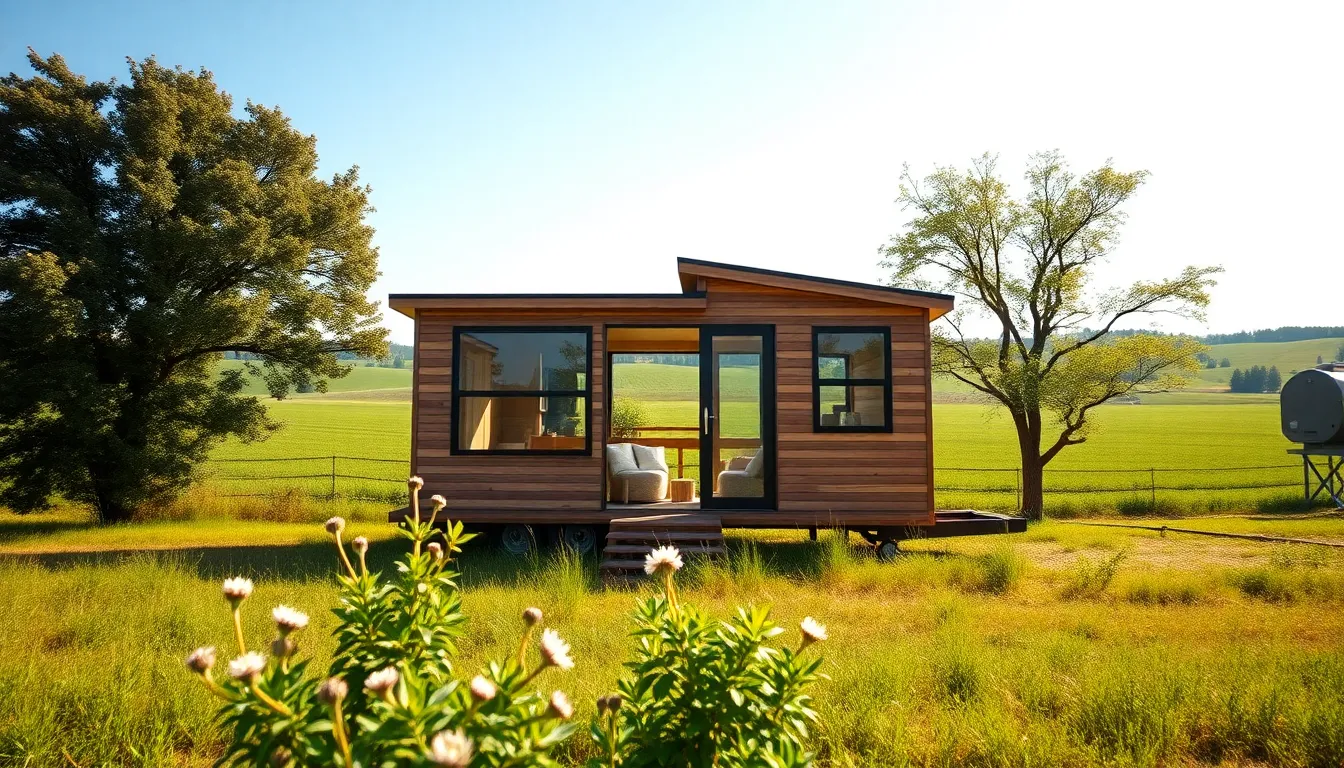Imagine living in a space that’s cozy, stylish, and also has a tiny footprint. Tiny homes in California are not just a trend: they’re a lifestyle revolution. With scenic views and a minimalist ethos, these pint-sized wonders are causing quite the stir. Ready to ditch the mansion mindset? Let’s explore the ins and outs of this incredible movement, and maybe even inspire you to consider life in a less-is-more abode.
Table of Contents
ToggleWhat Are Tiny Homes?

Tiny homes are compact dwellings typically under 400 square feet, designed to make the most out of minimal space. They offer all the amenities one would expect in a traditional home, from kitchens to bathrooms, yet condense them into a clever layout that maximizes utility. Imagine turning every square inch into something functional, perhaps your wine rack doubles as a bookshelf, or your sofa hides a bed. This innovative approach not only reduces clutter but challenges the conventional notions of homeownership and living space.
Benefits of Tiny Living
The perks of tiny living are plentiful. First off, there’s the financial aspect: savings can be substantial without the burden of a large mortgage. Tiny homes often come with lower utility bills, meaning that more money can go towards adventure rather than upkeep.
Less space leads to less stuff, letting homeowners focus on the things that genuinely matter, like experiences over possessions. From environmental sustainability to fostering a sense of community, tiny living simplifies life and encourages a deeper connection with nature.
The Tiny Home Movement in California
California has embraced the tiny home movement with open arms. Thanks to its innovative spirit and an ever-growing need for affordable housing, the state has seen an influx of designers, builders, and enthusiasts participating in this lifestyle shift.
Cities such as Los Angeles and San Diego are at the forefront, showcasing everything from modern pods to rustic tiny cabin homes. Often set against breathtaking backdrops, these homes offer not just a place to live, but a new way of life. People are increasingly looking to downsize, seeking a lifestyle that prioritizes quality over quantity.
Legal Considerations for Tiny Homes
Before diving headfirst into the world of tiny homes, it’s critical to navigate the legal landscape. Zoning laws can vary significantly by location, and understanding whether you can park your tiny home on a property is essential. California municipalities have been working to adapt their regulations: but, not all areas are equally friendly toward tiny dwellings.
Homeowners must also consider building codes, especially if they plan to build their own tiny home. Consulting with local authorities and, when necessary, hiring legal experts can save a heap of headaches down the line.
Where to Find Tiny Homes in California
California is brimming with options for anyone interested in tiny homes. From specialized builders to real estate websites, resources abound. Popular platforms like Airbnb have even started featuring tiny homes for short-term stays, allowing potential buyers to experience them firsthand.
Design and Customization Options
Customization is one of the highlights of tiny homes. Homeowners often work closely with builders to design layouts that fit their lifestyle. Whether it’s a sleek, modern design or a cozy, rustic cabin feel, the possibilities are endless. Add in eco-friendly features, and you can create a home that aligns with your personal values and aesthetics.
Tiny Home Communities in California
Tiny home communities are cropping up across California, providing a unique living situation for those who want not only a home, but also a sense of belonging. These often include shared spaces, gardens, and communal areas that foster a tight-knit environment.
Notable examples include ‘The Mighty Small House’ in Los Angeles and ‘Mosaic’ in Sacramento, each offering various amenities and fostering a collaborative atmosphere. These communities provide not just homes but also a lifestyle where individuals support and uplift one another.
Challenges and Considerations
Even with all the benefits, tiny living comes with its own set of challenges. Some people may struggle with the lack of space, particularly if they’re transitioning from larger homes. Storage becomes a critical issue. Not to mention, potential buyers need to consider the cost of land, which varies across California and can dramatically affect the overall investment.
Also, lifestyle changes might include less privacy and more cooperation with neighbors, something that could be seen as a disadvantage by those used to traditional living arrangements.








